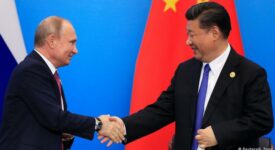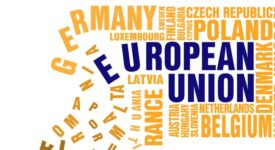The contest between unilateralism and universalism has become wide open in international relations and diplomacy. Geo-economics is increasingly becoming the norm, and connectivity initiatives and sustainable infrastructure development play a crucial role herein. Responding to the need for both hard and soft infrastructure, many governments have factored connectivity as the lynchpin of their foreign policy.
China’s Belt and Road Initiative (BRI) is by far the most developed of these initiatives, focusing on corridors and promoting people-to-people connectivity across continents. But how sustainable are these Chinese initiatives? And (how) does sustainable connectivity provide for an impetus for the EU and India to cooperate, considering the fact that it is a priority for both and is a field where the two sides share interests and approaches?
More than five years after its official launch in 2013, a growing number of governments have developed mixed feelings about the BRI. Seen as a “manifestation of China’s re-globalization ambitions,” the BRI raises expectations of economic and political opportunities at one level while inviting skepticism and doubt over its operational mode at another level. Obviously, through the BRI, the PRC is enhancing its political and strategic influence, including in Europe. Set against this context, the EU and India, as well as US, Japan and Australia, have all started their own counter-initiatives to balance the Chinese outreach under the BRI.
Europe and India are key actors of the western and non-western democratic liberal order that aim to strengthen an “open, transparent and rules-based system of international politics and economics.” Realizing this potential requires honest and engaged strategic and economic exchange between the two sides. To that end, focus on connectivity can add a long-term enduring vision to EU-India relations. The two sides should bind forces to promote sustainable connectivity as their overarching connectivity narrative. Though sustainable connectivity may be an appealing vision, it is still too elusive to deliver on-the-ground results.
India’s relations with the EU also seem to be changing from the past, emerging as a partnership of opportunities. The two sides may not agree on a number of governance issues, such as climate change and reform of global financial institutions, but there is no denying that India enjoys a better political acceptance in Europe on a range of people-centric issues that are linked to democracy and human rights, primarily in contrast to China.
There are opportunities for other EU states as well, as they can invest in India’s blue economy as well as manufacturing industries. The EU can also collaborate with Japan to explore the dynamics of investing in India. For people-to-people connectivity to increase between the two continental actors, dialogue at all levels should also be enhanced to deepen mutual understanding and identify avenues for joint collaborations.
The main hindrance to EU-India joint partnerships in connectivity seems to be the limited economic engagement between the two entities, especially in comparison to the EU’s trade with China or the US. For the EU and India to jointly undertake overseas projects, there needs to be an increase in their strategic trust and economic weight, which can come about only through increased trade and investment with each other.
‚EU-India Cooperation and China’s Belt and Road Initiative‘ – Research Paper by Maaike Okano-Heijmans and Jagannath P. Panda – Clingendael / The Netherlands Institute of International Relations.







